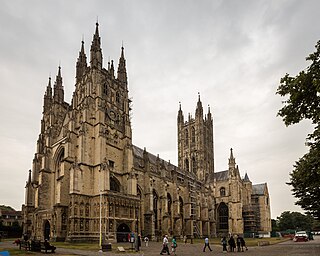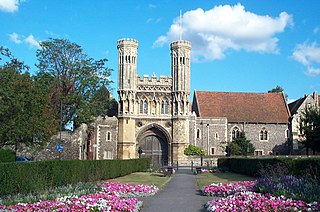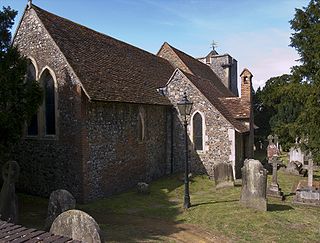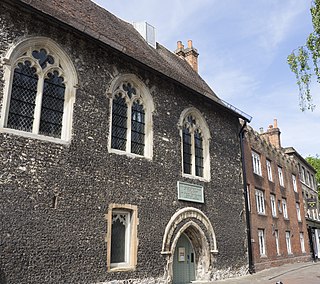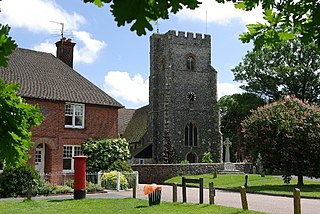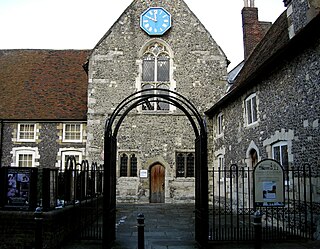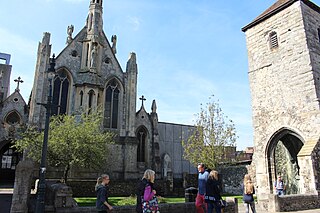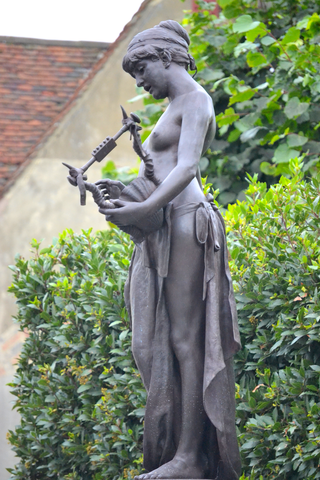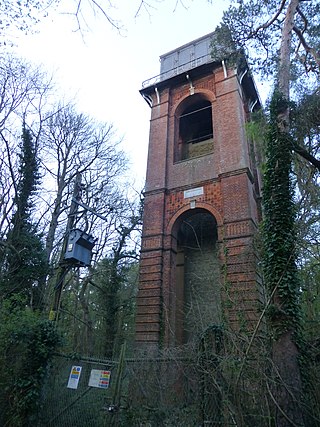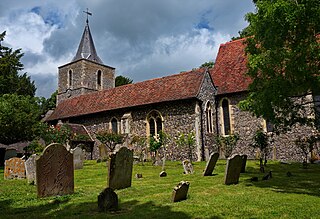17 Sights in Canterbury, United Kingdom (with Map and Images)
Legend
Welcome to your journey through the most beautiful sights in Canterbury, United Kingdom! Whether you want to discover the city's historical treasures or experience its modern highlights, you'll find everything your heart desires here. Be inspired by our selection and plan your unforgettable adventure in Canterbury. Dive into the diversity of this fascinating city and discover everything it has to offer.
Sightseeing Tours in CanterburyActivities in CanterburyThe Marlowe Theatre is a 1,200-seat theatre in Canterbury named after playwright Christopher Marlowe, who was born and attended school in the city. It was named a Stage Awards, 2022 UK Theatre of the Year.
The Westgate is a medieval gatehouse in Canterbury, Kent, England. This 60-foot (18 m) high western gate of the city wall is the largest surviving city gate in England. Built of Kentish ragstone around 1379, it is the last survivor of Canterbury's seven medieval gates, still well-preserved and one of the city's most distinctive landmarks. The road still passes between its drum towers. This scheduled monument and Grade I listed building houses the West Gate Towers Museum as well as a series of historically themed escape rooms.
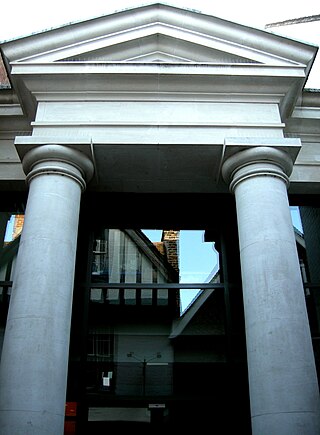
The Canterbury Roman Museum in Canterbury, Kent, houses a Roman pavement which is a scheduled monument, in the remains of a Roman courtyard house which itself is a grade I listed building. The pavement was discovered after World War II bombing, and has been open to the public since 1946. The museum was established in 1961. It houses many excavated artifacts from Roman Canterbury, including the important late Roman silver hoard known as the Canterbury Treasure, together with reconstructions of the Roman town.
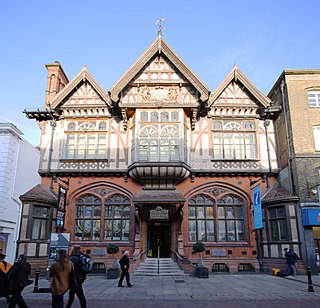
The Beaney House of Art and Knowledge is the central museum, library and art gallery of the city of Canterbury, Kent, England. It is housed in a Grade II listed building. Until it closed for refurbishment in 2009, it was known as the Beaney Institute or the Royal Museum and Art Gallery. It reopened under its new name in September 2012. The building, museum and art gallery are owned and managed by Canterbury City Council; Kent County Council is the library authority. These authorities work in partnership with stakeholders and funders.
Canterbury Cathedral is the cathedral of the archbishop of Canterbury, the spiritual leader of the Church of England and symbolic leader of the worldwide Anglican Communion. Located in Canterbury, Kent, it is one of the oldest Christian structures in England and forms part of a World Heritage Site. Its formal title is the Cathedral and Metropolitical Church of Christ, Canterbury.
Wikipedia: Canterbury Cathedral (EN), Website, Heritage Website
6. Saint Augustine's Abbey
St Augustine's Abbey was a Benedictine monastery in Canterbury, Kent, England. The abbey was founded in 598 and functioned as a monastery until its dissolution in 1538 during the English Reformation. After the abbey's dissolution, it underwent dismantlement until 1848.
7. Saint Martin's Church
The Church of St Martin is an ancient Church of England parish church in Canterbury, England, situated slightly beyond the city centre. It is recognised as the oldest church building in Britain still in use as a church, and the oldest existing parish church in the English-speaking world, although Roman and Celtic churches had existed for centuries. The church is, along with Canterbury Cathedral and St Augustine's Abbey, part of a World Heritage Site.
Wikipedia: St Martin's Church, Canterbury (EN), Heritage Website
8. Eastbridge Hospital of St. Thomas the Martyr
Eastbridge Hospital, also known as The Hospital of Saint Thomas Becket the Martyr, is a Hospital in the old sense of the word short for Hospitality and was founded in the 12th century in Canterbury, England, to provide overnight accommodation for poor pilgrims who were travelling to the shrine of St Thomas Becket. It is now one of the ten almshouses still providing accommodation for elderly citizens of Canterbury and is a grade I listed building.
Wikipedia: Eastbridge Hospital of St Thomas the Martyr, Canterbury (EN), Website
9. Bigbury Camp
Bigbury Camp is a univallate hill fort in the parish of Harbledown and Rough Common in Kent in England. The fort is a Scheduled Ancient Monument, with a list entry identification number of 1005169. Bigbury Camp is the only confirmed Iron Age hill fort in east Kent. It is managed by Kent Wildlife Trust.
10. St Mary's Church
St Mary's Church is in the village of Chartham, Kent, England. It is an active Anglican parish church in the Diocese of Canterbury. Constructed between 1285 and circa 1305, with a later tower of the fourteenth century. In 1875, the church was restored by George Edmund Street. St Marys is designated by English Heritage as a Grade I listed building.
11. The Marlowe Kit
The Canterbury Heritage Museum was a museum in Stour Street, Canterbury, South East England, telling the history of the city. It was housed in the 12th-century Poor Priests' Hospital next to the River Stour. The museum exhibited the Canterbury Cross and contained a gallery dedicated to Rupert the Bear, whose creator Mary Tourtel lived in Canterbury. It held regular events and exhibitions of local and national interest. The museum closed in 2018. It has since re-opened as The Marlowe Kit; an escape room, exhibition and creative space.
12. Reculver Roman Fort
Regulbium was the name of an ancient Roman fort of the Saxon Shore in the vicinity of the modern English resort of Reculver in Kent. Its name derives from the local Brythonic language, meaning "great headland" (*Rogulbion).
13. Catholic Church of St. Thomas of Canterbury
St Thomas of Canterbury Church is a Roman Catholic Parish church in Canterbury, Kent, England. It was built from 1874 to 1875 in the Gothic Revival style. It is situated on the corner of Burgate and Canterbury Lane, west of Lower Bridge Street, opposite the grounds of Canterbury Cathedral in the centre of the city. It is the only Roman Catholic church in Canterbury, built on the site of a medieval church ; the old St Mary Magdalen’s Tower was retained. The church contains relics of Thomas Becket.
Wikipedia: St Thomas of Canterbury Church, Canterbury (EN), Website
14. The Parish Church of St Mildred with St Mary de Castro
The Church of Saint Mildred is a partly Anglo-Saxon stone church in Canterbury probably dating from the 11th century. It has been a Grade I listed building since 1949. It is located in the St. Mildred's quarter of the historic city centre. This is the only surviving pre-Norman church within the former city walls.
15. Marlowe Memorial
The Marlowe Memorial is a statue and four statuettes erected in memory of the playwright and poet Christopher Marlowe in 1891 in Canterbury, England. The memorial was commissioned by a Marlowe Memorial Committee, and comprises a bronze statue, The Muse of Poetry sculpted by Edward Onslow Ford, standing on a plinth decorated with statuettes of actors playing Marlowe roles. The statue is now situated outside the city's Marlowe Theatre.
16. Adisham Water Tower
Adisham Water Tower is a Grade II listed building located in the parish of Adisham, Kent. The structure was built in 1903 in an Edwardian Italianate Revival style for the Margate Corporation District Waterworks. It is a rectangular tower built in red brick and terracotta with a water tank made of iron. A range of architectural features are described in its site listing and include “pilasters with banded rustication, open arcading with round arches with stone keystones and terracotta decoration above with stone panel bearing date and name of waterworks. One arch to shorter sides, three to longer. Moulded stringcourse between stages. Upper stage is similar but without the rustication and has deep eaves cornice on brackets supporting walkway around panelled iron tank." The iron water tank is inscribed “Erected by Newton Chambers and Co, Thorncliffe Ironworks Sheffield 1903."
17. Saint Vincent
St Vincent of Saragossa's Church is the Church of England parish church of Littlebourne, Kent, England. The parish is part of the Benefice of Littlebourne including Ickham, Wickhambreaux and Stodmarsh. It is a Grade I listed building.
Wikipedia: St Vincent of Saragossa Church, Littlebourne (EN)
Share
How likely are you to recommend us?
Disclaimer Please be aware of your surroundings and do not enter private property. We are not liable for any damages that occur during the tours.


